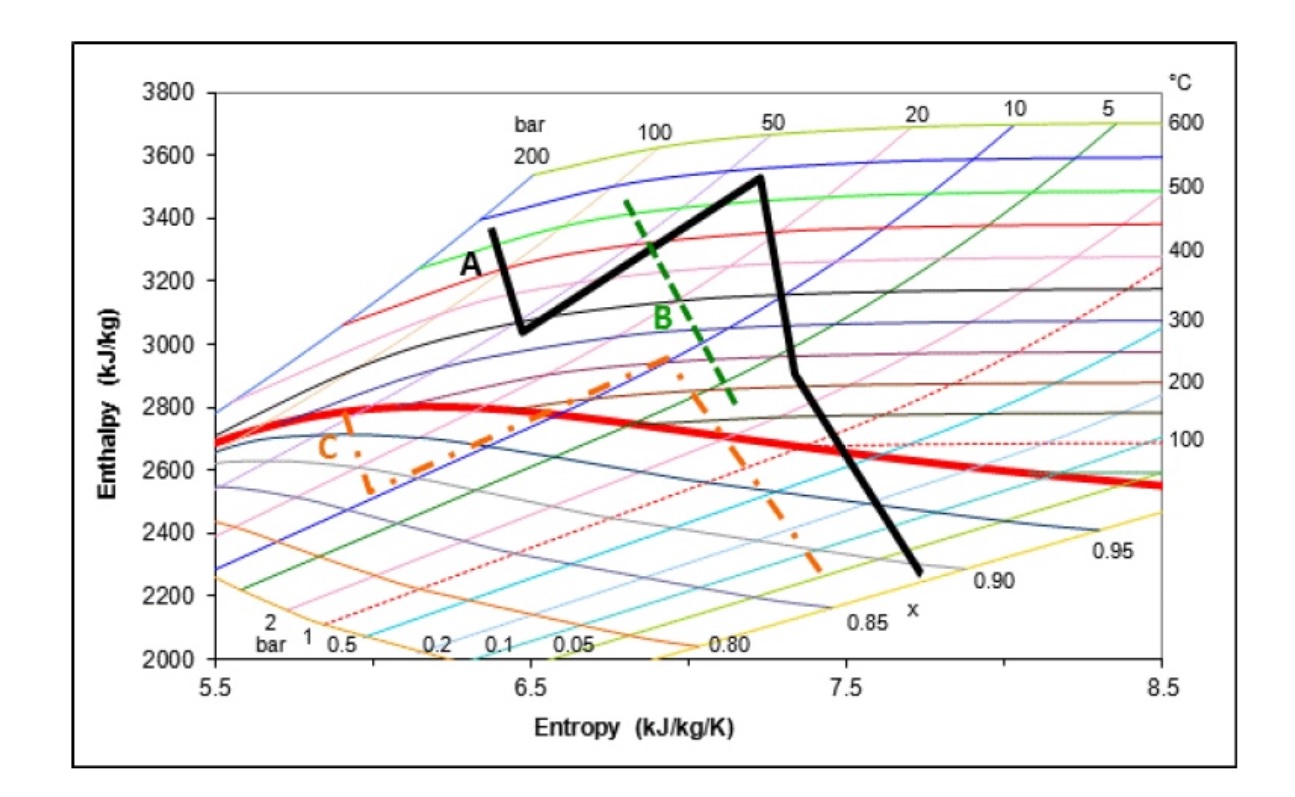Heat Transition Zone
Introduction
As superheated steam enters in the transition zone of the turbine and expands into LP section, steam may cross the saturation line, in the Mollier diagram, to eventually form nucleation of moisture drops on blades and disk surfaces.
Consequently, a number of physical-chemical processes will lead to mechanical corrosion-related damage: precipitation of chemical compounds, deposition, acidification, evaporation, drying of surfaces, erosion, stress corrosion cracking, fatigue, chemical transport, flow-accelerated corrosion and molecular diffusion.
Solution
You cannot dodge this fact but you can always mitigate the consequences by enhancing steam purity and chemistry conditioning of the cycle
1. Improve carryovers control
2. Lessen boiler level fluctuations
3. Minimize feedwater injection for attemperation
4. Implement a dedicated and exclusive water treatment program
5. Enhance impurities monitoring and control
6. Preservations are critical during shutdowns
Figure> Mollier diagram with three typical turbine cycles A) reheat turbine in fossil fired plant, B) backpressure turbine, C) reheat turbine in a nuclear LWR plant Cortesy of IAPWS



